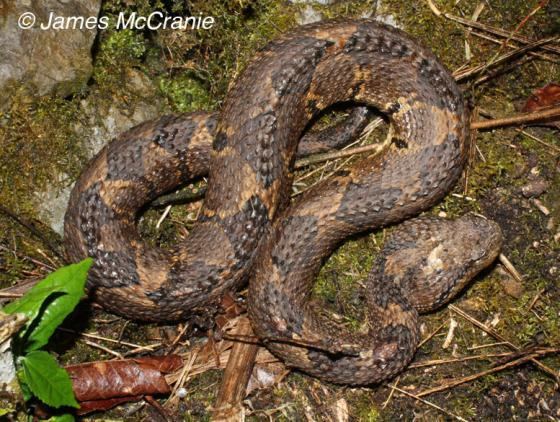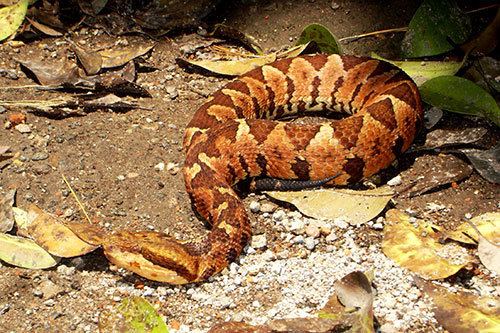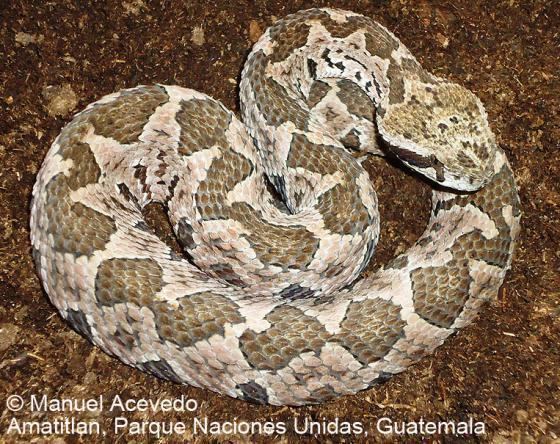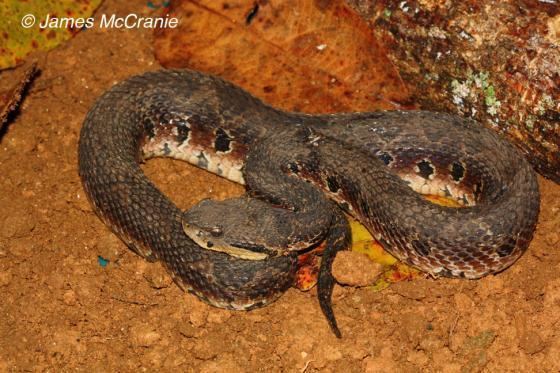Kingdom Animalia Suborder Serpentes Subfamily Crotalinae Phylum Chordata Order Snake | Subphylum Vertebrata Family Viperidae Scientific name Atropoides Rank Genus | |
 | ||
Lower classifications Atropoides nummifer, Atropoides picadoi, Atropoides olmec | ||
Central american jumping pitviper atropoides mexicanus feeding
Atropoides is a genus of venomous pitvipers endemic to Mexico and Central America. Three species are currently recognized. The common names suggest they are able to leap at an attacker, but this is likely exaggerated. Common names for the species include jumping pitvipers and jumping vipers.
Contents
- Central american jumping pitviper atropoides mexicanus feeding
- Atropoides audiovisuelle warnung
- Description
- Geographic range
- Behavior
- Feeding
- Venom
- Species
- References

Atropoides audiovisuelle warnung
Description

All of these snakes are extremely thick-bodied, with A. nummifer being the most stout and A. picadoi being the most slender. However, the greatest recorded total length is for A. picadoi, with one specimen that measured 120.2 cm (47 in). The head is large, with small eyes and a broadly rounded snout. The tail is short, not prehensile, and accounts for only 15% of the total length.

The color pattern usually consists of a gray-brown or reddish brown ground color (sometimes yellow, cream, purplish brown or black), overlaid with a series of lateral and dorsal blotches. The shape of these blotches is subject to some variation, but is sometimes still helpful for identification.
Geographic range

Found in the mountains of eastern Mexico southeastward on the Atlantic versant and lowlands though Central America to central Panama. On the Pacific versant, they occur in isolated populations in east-central and southern Mexico, Guatemala, El Salvador, Costa Rica and Panama.
Behavior

The common name alludes to the supposed ability these snakes have to launch themselves at an attacker during a strike, thereby bridging a distance that is equal to or greater than the length of the body. Mehrtens (1987) states that they live up to their name, striking at their assailants with such force that they actually leave the ground. Campbell and Lamar (2004), on the other hand, describe this as greatly exaggerated, saying that actually these snakes are only able to strike about half of their own body length. In addition, they describe them as slow moving and non-aggressive. However, when provoked all species will put on a rather dramatic open-mouthed threat display.
These snakes may be active both during the day and at night. On the other hand, populations found at higher altitudes seem to be active only during daylight hours and never at night.
Feeding
Adults feed mainly on small mammals and lizards, while juveniles feed on orthopterans and skinks.
Venom
Unlike most vipers, members of this genus will strike and then hold on and chew. In one case, a machete was used to pry off the jaws. March (1929) wrote that A. mexicanus (A. nummifer) will hang on and make half a dozen punctures unless quickly and forcibly removed. However, the effects of the venom include only transient pain and mild swelling. In one part of Honduras the locals even insist that the snake (A. nummifer) is not venomous. Laboratory studies suggest that Atropoides venoms are unlikely to lead to consumption coagulopathy and incoagulable blood in humans. However, other research revealed that of ten different Costa Rican pit viper venoms tested on mice, that of A. picadoi was the most hemorrhagic.
Species
*) Not including the nominate subspecies.
T) Type species.
